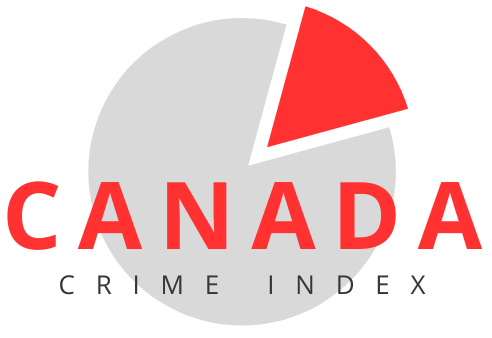In Alberta, the minimum wage has been a focal point of economic policy and public debate.
The policy had the goal of improving the standard of living for low-wage workers and addressing the growing concerns about income inequality.
In recent years, there has been a lot of discussion on this subject. Therefore, it’s no wonder why so many people ask the question “What is minimum wage in Alberta?”
Let us talk about it.
1. What is a Minimum Wage in Alberta?
Alberta’s minimum wage is set at $15 per hour as was established on October 1, 2018.
A move to increase the minimum wage positioned Alberta as the first province in Canada to reach the $15 per hour threshold.
Previous minimum wage Alberta rates:
| Date | Minimum Wage Alberta |
|---|---|
| 01 Sep 2011 | CA$9.40 |
| 01 Sep 2012 | CA$9.75 |
| 01 Sep 2013 | CA$9.95 |
| 01 Sep 2014 | CA$10.20 |
| 01 Oct 2015 | CA$11.20 |
| 01 Oct 2016 | CA$12.20 |
| 01 Oct 2017 | CA$13.60 |
The move was part of a broader campaign to enhance the living standards of low-wage workers across the province.
Since its implementation, this wage rate has been the subject of extensive analysis and debate.
The decision to increase the minimum wage to $15 per hour was driven by a commitment to reduce poverty and inequality and to ensure that workers could earn a living wage that corresponds more closely to the rising cost of living.
Critics of the increase worried about potential negative impacts on employment rates, especially in sectors heavily reliant on minimum wage Alberta labor such as hospitality and retail.
In 2023, it was announced that locals benefited from the higher minimum wage Alberta rate, but that roughly 23,000 jobs were lost as a result of the measures.
While some small businesses reported increased pressure on payroll, others adapted by increasing prices or reducing non-wage benefits.
There’s the answer to the first of many questions ”What is minimum wage in Alberta?”
2. Student Wage
Alberta’s minimum wage policy includes a special provision for students under 18 years of age, where they earn a minimum of $13 per hour. This rate applies for up to 28 hours of work per week during school sessions.
Derek Messacar and Daniel Moore wrote a report on the subject.
If students work beyond these hours, they must be paid at the general minimum wage Alberta rate of $15 per hour.
The student wage rate is designed to promote employment among young individuals by making it financially more feasible for employers to hire them.
However, it also raises questions about the fairness and equity of paying young workers less than their adult counterparts for the same work.
Supporters argue that this system helps students gain work experience and manage school responsibilities effectively.
Opponents, however, suggest that it might contribute to a devaluation of young workers’ labor.
A good indicator of just how divided employers were on this is that more than 100 businesses decided not to cut the salaries of their young employees.
Those businesses even found an organization named Alberta15.
3. Overtime Rules
In Alberta, overtime is calculated at one and a half times the regular wage for all hours worked beyond 8 hours per day or 44 hours per week, as was reported by Ca.Indeed.
The rule is in place to compensate employees fairly for longer hours of work, encouraging employers to manage their staffing needs within regular working hours.
This overtime policy is part of a broader framework of labor laws designed to protect workers from exploitation and to promote a healthy work-life balance.
The effectiveness of overtime rules is often gauged by their impact on both employee well-being and business operations.
Employees benefit from higher earnings on longer shifts, which can provide a significant boost to their overall income, especially in industries with fluctuating work demands.
For businesses, these rules can lead to better planning and distribution of work hours, though they might increase operational costs.
Critics argue that strict overtime regulations can lead employers to restrict hours or hire more part-time staff to avoid paying overtime rates.
4. Exemptions and Special Cases
- Real estate brokers
- Securities salespersons
- Insurance salespersons paid entirely by commission
- Students in a work experience program approved by the local government
- Students in an off-campus education program provided under the Education Act
Domestic workers have distinct wage arrangements depending on whether they live with their employers or not.
Those residing with their employers are often compensated with a set monthly rate, which includes considerations for lodging and meals, whereas those who do not live in receive the standard hourly wage.
For example, real estate brokers typically earn commissions based on sales, and their total earnings can significantly exceed the minimum wage.
However, this system also opens up the potential for exploitation if not properly regulated. Ensuring that all workers have adequate protections and fair compensation remains a challenge.
5. Economic Impact of the Minimum Wage in Alberta
Contrary to initial fears, the increase in Alberta’s minimum wage to $15 per hour has not led to significant job losses.
Studies examining the aftermath of the wage hike indicate that while some small businesses faced challenges in adjusting to higher labor costs, overall employment remained stable, according to ATB.
Furthermore, the increase in minimum wage in Alberta has potentially stimulated the local economy by boosting consumer spending.
The higher minimum wage in Alberta puts more disposable income in the hands of lower-income workers, who are more likely to spend their earnings on goods and services.
It can lead to a virtuous cycle of economic activity and growth.
However, the long-term sustainability of this wage policy continues to be debated, particularly in terms of its alignment with economic conditions and inflation.
6. Minimum Wage and Inflation
While Alberta’s minimum wage stands at $15 per hour, it is not currently indexed to inflation.
The federal government recently increased the minimum wage to $17.30.
Even though the federal gov raised the minimum wage, Brian Jean, the Minister of Jobs, Economy, and Northern Development stated that there are no plans for further increases in Alberta.
That means that although the wage was set with the intention of providing fair compensation based on the cost of living in 2018, it does not automatically adjust to reflect subsequent changes in the economy.
Other provinces in Canada have tied their minimum wage Alberta rates to inflation to ensure that wages keep pace with the rising costs of goods and services, thereby preserving the purchasing power of low-income workers.
The lack of inflation adjustment in Alberta could potentially erode the real value of the minimum wage over time. As prices for housing, food, and other essentials rise, the static minimum wage might become less effective at protecting workers from poverty.
One of the best criticisms is that the minimum wage was upped by 3%, but it has to cover 8% higher costs of living, which only bears a little fruit as you will agree.
Dr. Jim Stanford made the argument in his report from May 2024.
He also gives an example of other provinces that now have a higher minimum wage, like British Columbia, Quebec, Ontario, New Brunswick, Manitoba, Newfoundland and Labrador, Yukon or Nova Scotia.
Prince Edward Island minimum wage is at a similar level at the moment, but it is significantly higher in Alberta than in Saskatchewan.
The disconnection could lead to increased financial strain on workers and make it more difficult for them to meet basic living costs.
7. Profile of Minimum Wage Earners
In Alberta, the demographic profile of minimum wage earners contradicts the common stereotype that only teenagers and young adults work for the minimum.
Nearly half of the individuals earning minimum wage are parents, and a significant number are women, highlighting the importance of the minimum wage in supporting various family structures and addressing gender pay disparities.
- 15-19 years – 27.1%
- Over 20 years – 72.9%
- 30 years or older – 41.6%
- 55 years or older – 11.5%
Demographic data suggests that the impact of raising the minimum wage extends well beyond the individual worker, affecting whole families and communities.
The reliance on minimum wage jobs by a considerable portion of the workforce, including those with substantial family responsibilities, underscores the necessity of ensuring these positions offer a livable income.
The challenge remains to make minimum wage sufficient to support not just individuals, but families, in achieving a reasonable standard of living without severe financial stress.
8. Living Wage vs. Minimum Wage Alberta
Despite the increase to $15 per hour, Alberta’s minimum wage still falls short of the living wage required in major cities like:
The living wage is calculated based on the actual costs of living in a specific area and is generally higher than the minimum wage. It considers expenses such as:
- Housing
- Food
- Medical needs
- Education
- Transportation (Northwest Territories and Nunavut partiularly suffer from this)
The gap between the living wage and the minimum wage in Alberta highlights ongoing challenges in wage policy.
While the minimum wage provides a legal baseline, it often does not meet the real-world expenses faced by workers, especially in urban areas where the cost of living is higher.
Discrepancy can lead to a workforce that must often rely on multiple jobs or governmental assistance to make ends meet, raising questions about the effectiveness of current wage standards in fostering economic independence and stability.
9. Employer Obligations and Employee Rights
In Alberta, employers must ensure that all non-unionized employees, including those paid on commission, receive at least the minimum wage. This legal requirement is crucial in protecting employee rights and preventing wage theft.
Employees are entitled to severance pay if dismissed under certain conditions, and there are legal avenues available to address grievances related to wage discrepancies or violations.
Employer compliance is enforced through provincial labor laws, which are designed to create a fair working environment and prevent exploitation.
The effectiveness of these laws depends significantly on the awareness and assertiveness of employees in knowing and exercising their rights.
Legal resources and support from labor unions can play a vital role in empowering employees to demand fair treatment and just compensation.
10. Debate and Controversy Surrounding the Minimum Wage
Since its last adjustment in 2018, the minimum wage in Alberta has remained at $15 per hour, leading to significant debate over its adequacy in meeting the cost of living.
Critics argue that without further increases or adjustments to reflect economic changes such as inflation, many workers will struggle to afford basic necessities.
We can even see that many advocates talk about the minimum wage level as only fair for the corporate interests, neglecting the workers.
The debate is fueled by differing views on the economic impacts of raising the minimum wage, including concerns about potential job losses in certain sectors and the overall effect on small businesses.
Proponents of a higher minimum wage in Alberta argue that it can reduce income inequality and provide a more stable economic foundation for low-income workers, while opponents caution about the possible adverse effects on employment rates and business sustainability.
The Bottom Line
Alberta’s $15 per hour minimum wage has significantly influenced the economic landscape since its implementation.
While it has brought benefits such as increased consumer spending and stability for low-income earners, the wage rate’s effectiveness in keeping up with the cost of living remains a contentious issue.
The province faces ongoing challenges in balancing employer capabilities with worker needs, particularly in a dynamic economic environment.
















